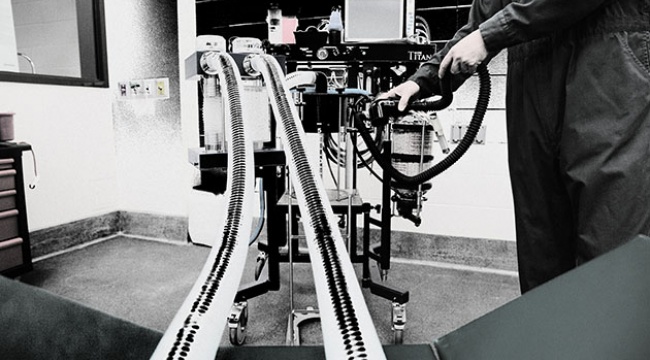Who's Doing the Heavy Lifting?
At some point, we all get sick. When the pain and suffering brought forth by illness becomes too much to handle, it is best to visit people who can help alleviate that distress. Those people can be found here.
Dressed in aquamarine, you’ll spot them in classrooms, libraries, labs and in operating suites where they touch warm, pulsing chests with the cold, metal end of their stethoscopes. The only difference, however, is that these are University of Calgary students training to inflict this chill, professionally.
Of the 250 applications this faculty received last year, 30 were accepted, and of that select cohort, 90 per cent were women. It is on these hallowed grounds — one that is physically removed from the rest of our main campus — where they will spend the next few years of their lives, learning to solve health problems.
Along with obtaining knowledge of anatomy, medicine and people skills, students receive hands-on experience with equipment like this anesthetic machine built by an American company called DRE. Delivering isoflurane or alternate gas anesthetic to intubated patients via an endotracheal tube, this impressive piece of equipment cost more than $35,000.
Although in a professional practice it would likely be used every day, in a smaller teaching and learning setting like ours, it is used roughly 10 times a year. Don’t be mistaken, however; this is not your common medical school. Here, we deal with some heavy problems. And we mean "heavy” in a very literal sense. Housed in the same room as the anesthetic machine, we also have a crane that can lift a patient — one that can weigh in at 2,000 lbs. — on to a very durable operating table. That’s no bull. Or maybe it is?











